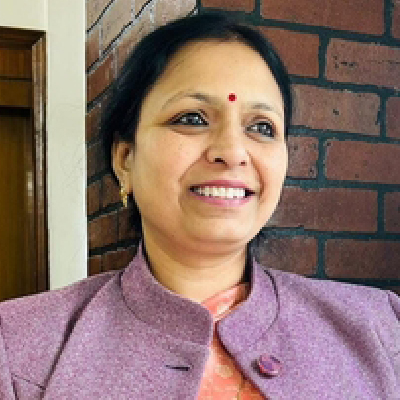The Essential Pillars for an Effective Education System and Institution | Dr. Sweta Saurabh | Director | I Business Institute
 Once upon a time, in a quaint village nestled amidst the rolling hills of rural India, lived a young girl named Priya or may be Sunita or Radhika or Diksha!!!… alright, let us go with Priya! Despite the challenges posed by limited resources and societal norms that often discouraged girls from pursuing education, Priya harbored a burning desire to learn. Her journey began when she set her sights on the distant schoolhouse, dreaming of the knowledge and opportunities that awaited her within its walls.
Once upon a time, in a quaint village nestled amidst the rolling hills of rural India, lived a young girl named Priya or may be Sunita or Radhika or Diksha!!!… alright, let us go with Priya! Despite the challenges posed by limited resources and societal norms that often discouraged girls from pursuing education, Priya harbored a burning desire to learn. Her journey began when she set her sights on the distant schoolhouse, dreaming of the knowledge and opportunities that awaited her within its walls.
With determination blazing in her eyes, Priya embarked on a quest for education that would soon ignite a spark of change in her community. With the support of local educators and community leaders who recognized her potential, Priya’s dream began to take shape. Soon, she found herself welcomed into a newly established school, where modern infrastructure and trained teachers awaited her eager mind.
Her journey epitomizes the transformative power of education and underscores the importance of establishing an effective education system and institution to unlock the potential of individuals like Priya.
The curriculum of Priya’s school was unlike any other, meticulously designed to cater to diverse learning needs and foster critical thinking, creativity, and practical skills among students. Here, Priya discovered the joy of learning, immersing herself in a world of knowledge and discovery. She didn’t just memorize facts and figures; she explored, experimented, and discovered the pleasure of acquiring knowledge in every subject she encountered. Whether she was painting a masterpiece in art class, conducting science experiments in the lab, or participating in hands-on activities that brought history to life, Priya’s education was a tapestry woven with threads of curiosity, imagination, and hands-on experience.
But Priya’s journey was not solitary; it was intertwined with the broader landscape of educational reforms sweeping across her village and beyond. These reforms, driven by essential decisions made by the government, laid the foundation for an effective education system that empowered learners like Priya to thrive.
Quality Teaching and Learning became the bedrock of Priya’s educational experience, as dedicated educators underwent rigorous training programs and embraced innovative pedagogical practices to inspire and engage their students. Through dynamic teaching methods, personalized attention, and a commitment to excellence, teachers became catalysts for growth and learning. Inclusive Education became a beacon of hope for marginalized communities, as initiatives such as scholarships, reservation policies, and outreach programs broke down barriers to access and ensured that every child had the opportunity to learn and succeed. No longer confined by societal norms or economic constraints, children from all walks of life found a welcoming space within the halls of education.
Infrastructure and Resources blossomed, transforming classrooms into vibrant hubs of learning equipped with state-of-the-art facilities, libraries stocked with books and resources, and laboratories where students could explore and innovate. Initiatives like the Samagra Shiksha Abhiyan infused new life into educational institutions, creating environments conducive to growth and exploration.
Technology Integration emerged as a game-changer, bridging gaps in access and opening doors to a world of knowledge and opportunity. Platforms like SWAYAM and NPTEL democratized learning, offering high-quality educational resources and courses to students regardless of their geographical location or socioeconomic background. With digital literacy becoming increasingly essential in the modern world, technology became an indispensable tool for empowerment and progress.
Curriculum Reforms ushered in a new era of learning, where education was not confined to textbooks but embraced a multidisciplinary and flexible approach that catered to the needs of a rapidly changing world. The National Curriculum Framework (NCF) laid the groundwork for innovation and creativity, empowering educators to design curricula that fostered critical thinking, problem-solving, and real-world application of knowledge.
Community Engagement emerged as the heartbeat of education, with local communities playing an active role in shaping the educational landscape. Grassroots initiatives like the Ekal Vidyalaya Foundation empowered communities to take ownership of education, fostering a sense of pride and responsibility for the well-being of future generations.
As Priya’s journey unfolded, her story became a testament to the transformative power of an effective education system and institution. Through collaborative efforts between educational bodies, policymakers, communities, and other stakeholders, the nation began to realize its vision of a thriving education ecosystem where every child had the opportunity to learn, grow, and succeed.
Today, Priya stands as a beacon of hope, her journey inspiring generations to come. With each step forward, India moves closer to fulfilling its promise of a brighter future for all, where individuals like Priya can fulfill their aspirations and contribute to the nation’s progress. In the symphony of education, Priya’s story reminds us that the true essence of learning lies not just in acquiring knowledge but in embracing the journey of discovery and empowerment that education offers.


